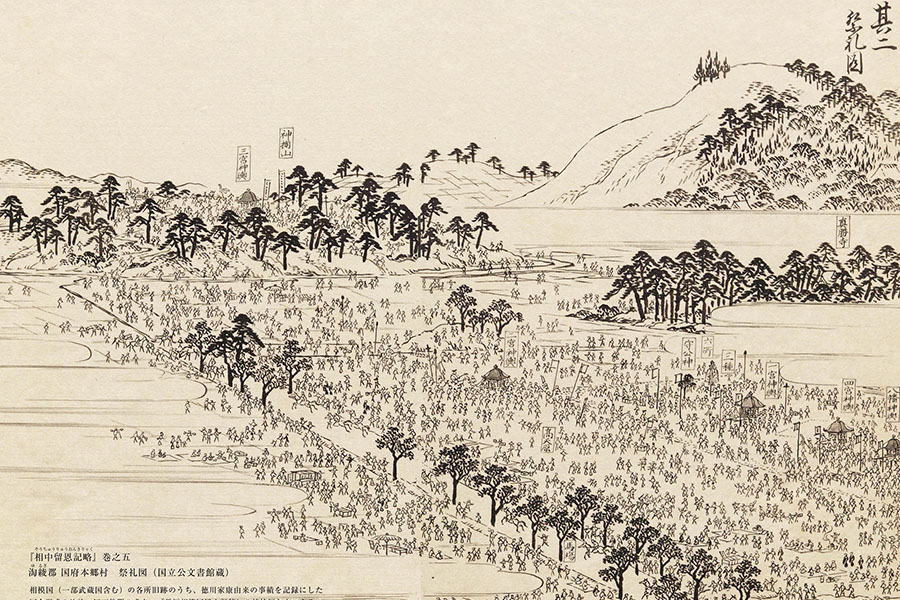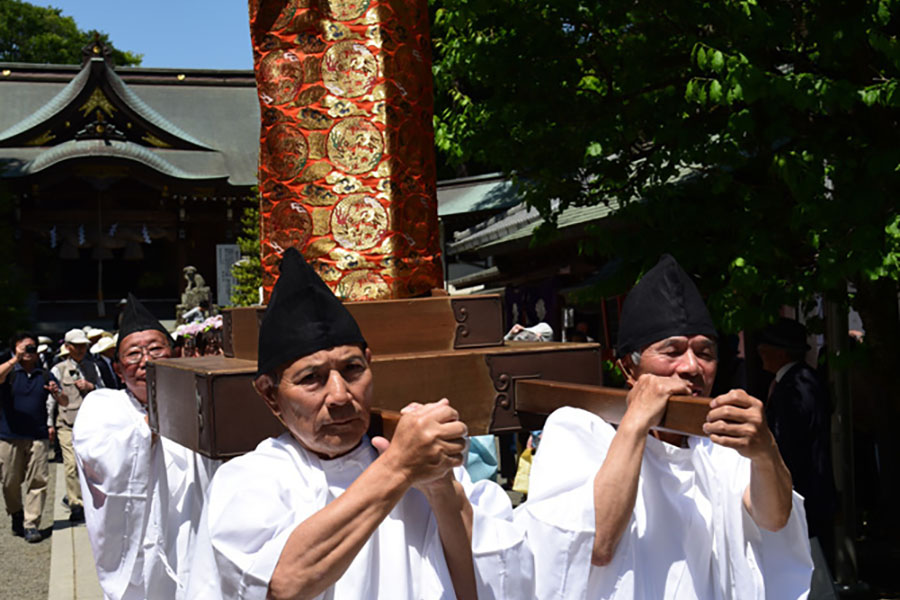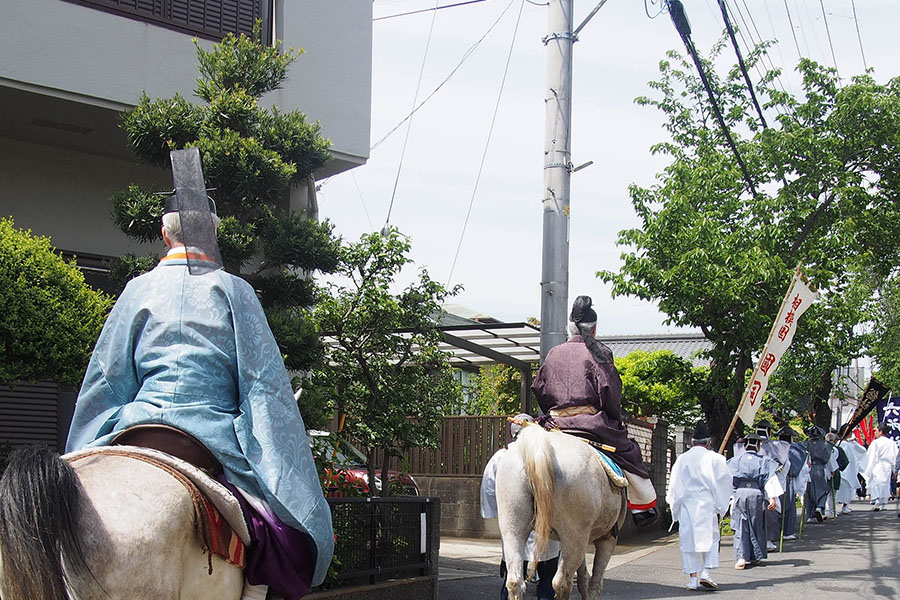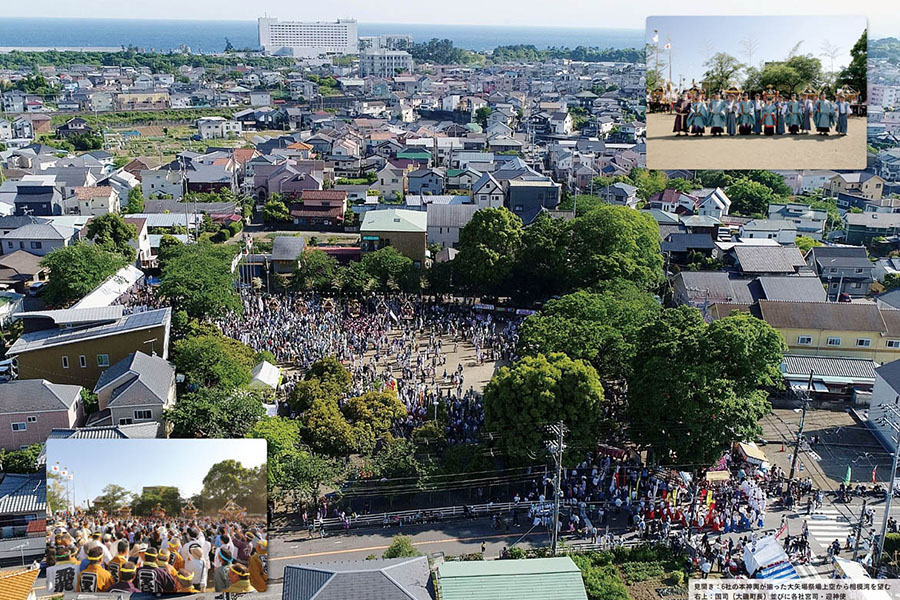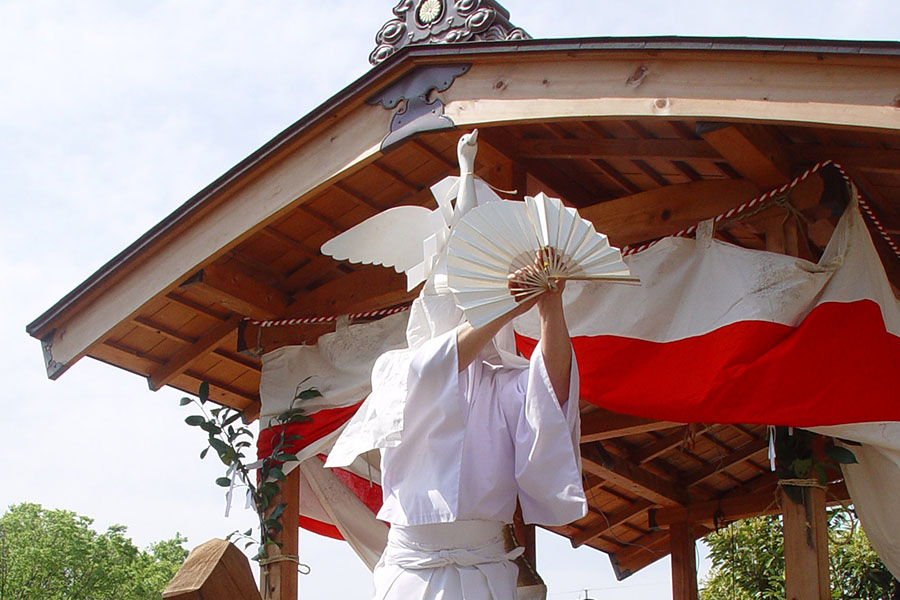Sagami Konomachi Festival
The Konomachi Festival is held every year on May 5 to pray for abundant harvests and peace in the land. Hosted jointly by six shrines located throughout the old province of Sagami, it takes place at Rokusho Jinja in the Kokufu Hongo neighborhood of Oiso. It is a designated Intangible Folk Cultural Property of Kanagawa Prefecture.
Participating shrines:
First Shrine Samukawa Jinja (Samukawa town)
Second Shrine Kawawa Jinja (Ninomiya town)
Third Shrine Hibita Jinja (Isehara city)
Fourth Shrine Sakitori Jinja (Hiratsuka city)
Provincial Hachiman Shrine Hiratsuka Hachimangu (Hiratsuka city)
Provincial Combined Shrine (Sosha) Rokusho Jinja (Oiso town)
The festival is ancient in origin; one 19th century geographical treatise on Sagami Province, the Shinpen Sagami no kuni fudoki ko, reports that though details are unknown it is thought to have begun in the 8th century. Another geographical work (Sochu ryuon kiryaku) from the same time calls it “the foremost festival in Sagami Province, during which many people gather and the grounds overflow with worshippers,” indicating that the event was as bustling then as it is today.
The festival consists of two main parts: the ancient Zamondo rite, which takes place at the Mt. Kamisoroi, and the series of rituals at the Oyaba.
Mt. Kamisoroi Ceremonial Site
Mt. Kamisoroi literally means `the mountain where the deities gather`. The mountain plays a very important role as a ceremonial site for the Sagami Konomachi festival. Firstly, five portable Shinto shrines are carried to the site where the ancient Zamondo rite will be conducted. The rite is served by Samukawa Jinja shrine, Kawawa Jinja, Hibita Jinja, Sakitori Jinja, and Hiratsuka Hachimangu shrine. The Zamondo is a silent ritual in which 2 tiger fur rugs from Samukawa Jinja and Kawawa Jinja (representing the sacred seat for the divine spirit of each shrine), are set on the ground and shifted forward by each representative shrine official. This is repeated three times. The chief priest of Hibita Jinja then arbitrates with the words “until next year”. This ritual symbolically reenacts the controversy of the two shrines as to which has the highest-ranking position in Sagami province. The arbitration implies the postponing of the controversy `until next year` as a way of finding a peaceful solution. This is a particularly well-known ritual among those of Sagami Konomachi rituals. After the Zamondo ritual, the portable shrines descend the mountain and head to the Oyaba ceremonial site situated 300m to the south.
Oyaba Ceremonial Site Oyaba is the name of the ceremonial site used exclusively for the Sagami Konomachi festival. Following the ritual at Mt. Kamisoroi, officials from the six Shinto shrines carry a portable shrine and gather at Oyaba to conduct a ceremony to pray for peace, national prosperity, and an abundant harvest.
Rituals at the Oyaba Ceremonial Site
1. Saginomai dance (performed when the portable shrine is entering/leaving and during the ritual)
2. Arrival of Rokusho Jinja’s portable shrine.
3. The portable shrines descend Mt. Kamisoroi and are carried to the Oyaba ceremonial site, and then placed to the right of Rokusho Jinja’s portable shrine.
4. Shichijugozen Kensen: Offering of sacred food to the deity in front of each portable shrine.
5. Shintaimen Shinji :The chief priests of the five shrines dedicate each divine spirit to Rokusho Jinja shrine.
6. Kokushi Hohei: The Mayor of Oiso town dedicates an offering to each portable shrine. This ritual derives from the tradition when the governor of the former province of Sagami ceremonially made a pilgrimage to these shrines in ancient times.
7. Shinsaikyo: The chief priest of Rokusho Jinja dedicates an offering to the five portable shrines. This indicates that each deity from the five shrines has been enshrined into Rokusho Jinja. Following the completion of the rituals, the portable shrines leave the site and return to their respective shrine.
Saginomai Dances The Saginomai dances performed during the Konomachi Festival are considered to originate in ancient annual entertainments hosted by the governor of Sagami Province. Beginning in the 7th century, a center of government called kokufu was established for each province in Japan and a governor sent to be stationed there from the capital. Once a year, it is said, the Sagami governor invoked the deities of the province’s six main shrines at the kokufu to ask for peace and prosperity in the land. Leading figures from the area were also invited to the kokufu on this occasion, and the governor entertained his guests according to aristocratic custom by having musicians perform on barges floating upon the garden pond. The barge-shaped stage on which the Saginomai dances take place hark back to those aristocratic practices. Tradition holds that the dances were originally performed by dancers and musicians who accompanied the governor from the capital. The Saginomai consists of two programs, the Nagashi and the Maiji. The Nagashi is performed to welcome the portable shrines carrying the deities of the festival’s six participating shrines as they enter the Oyaba ceremonial site. The Maiji is made up of the Saginomai (Heron Dance), which prays for peace; the Ryunomai (Dragon Dance), which prays for abundant harvests; and the Shishinomai (Lion Dance), which prays for the avoidance of calamity. Together, the dances recall the graceful aristocratic days of former times but also embody the ancient governors’ prayers for peace, plenty, and prosperity in the land of Sagami. Those prayers still resonate today, communicating the spirit of people across the ages to us here and now.

